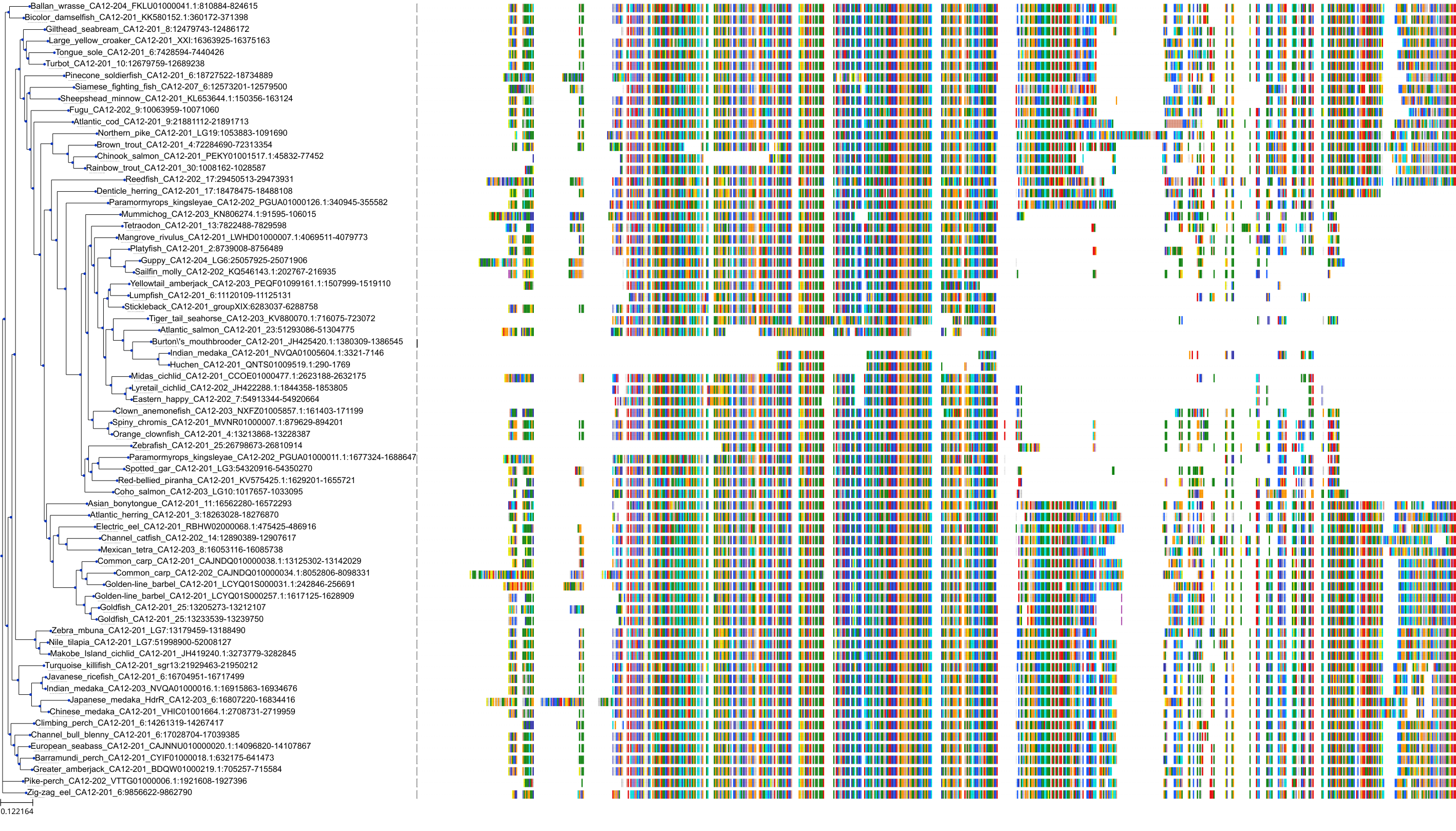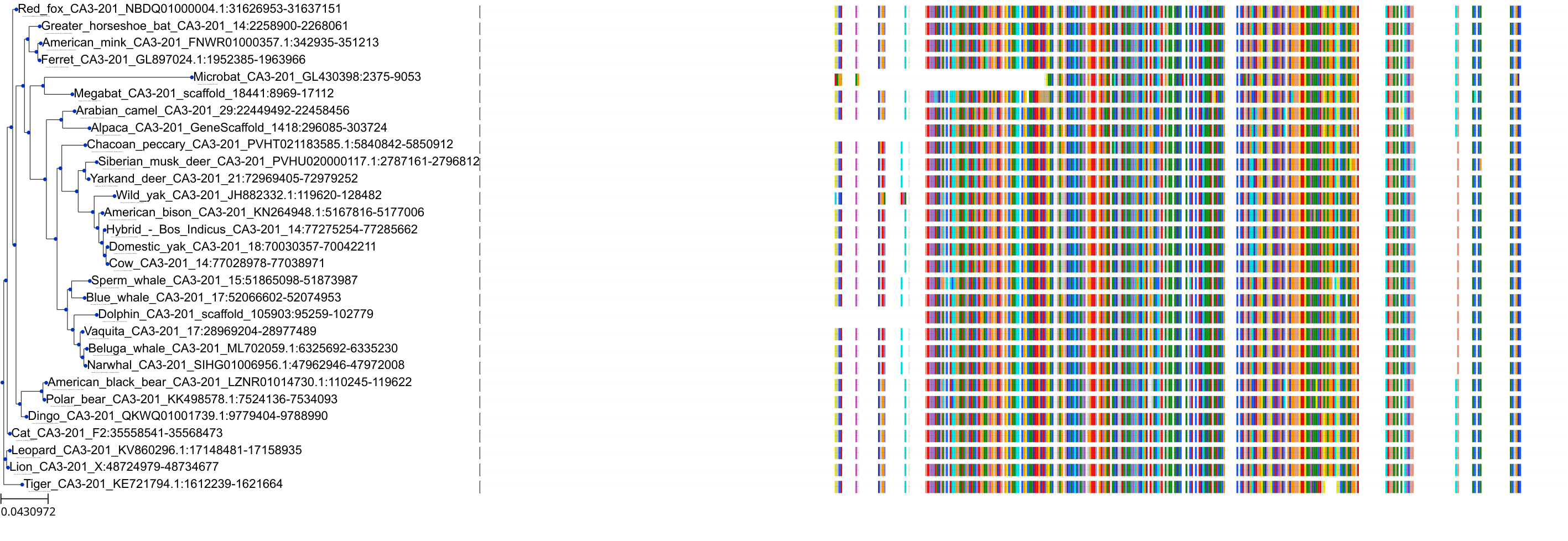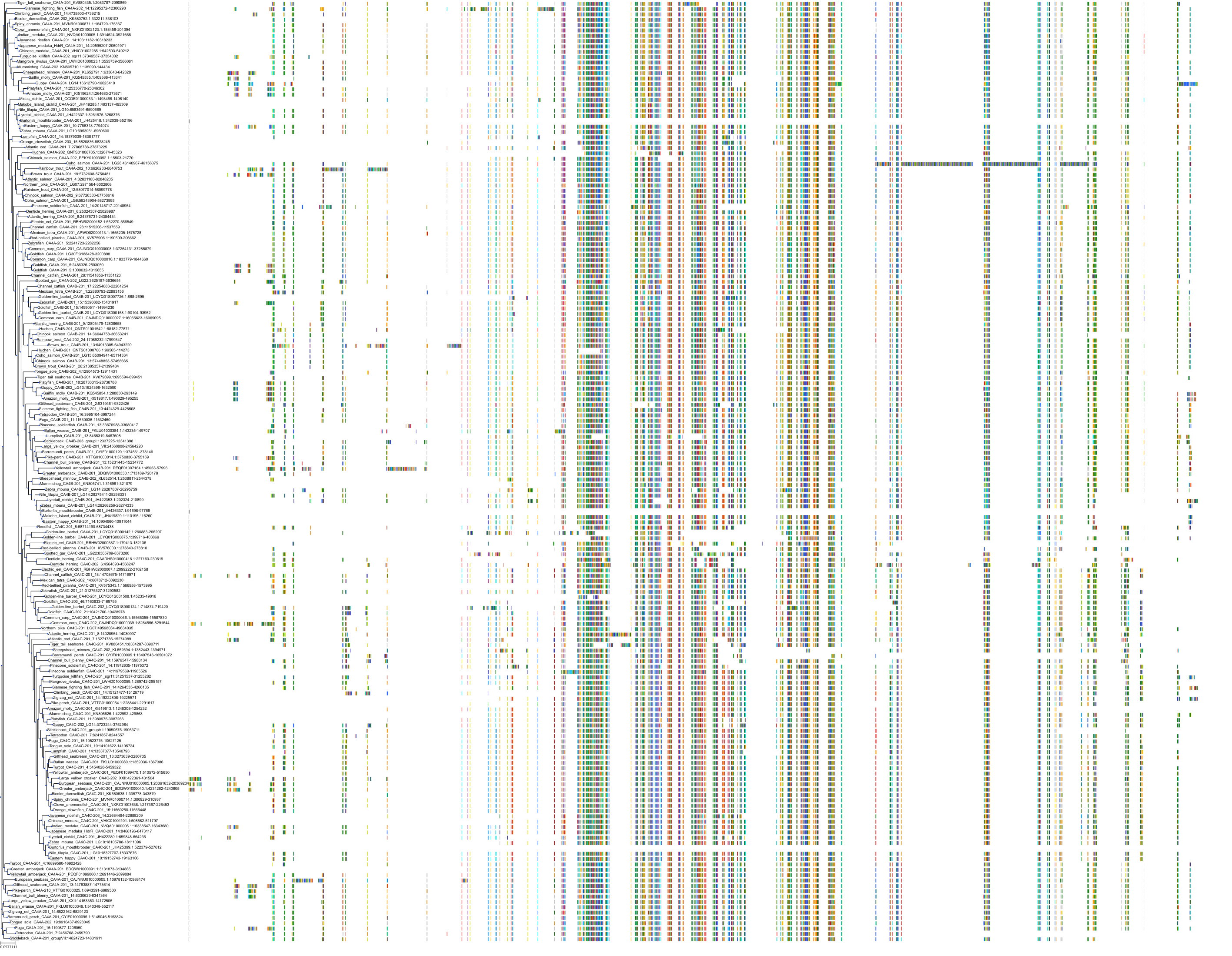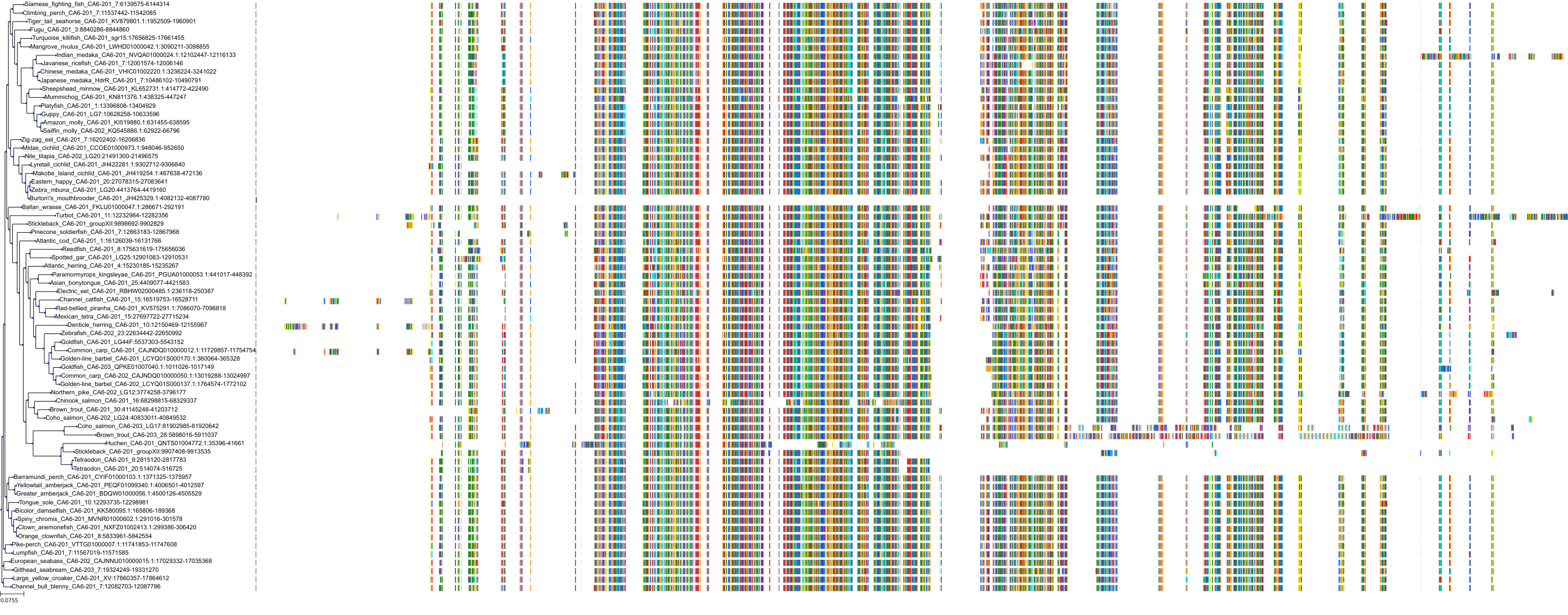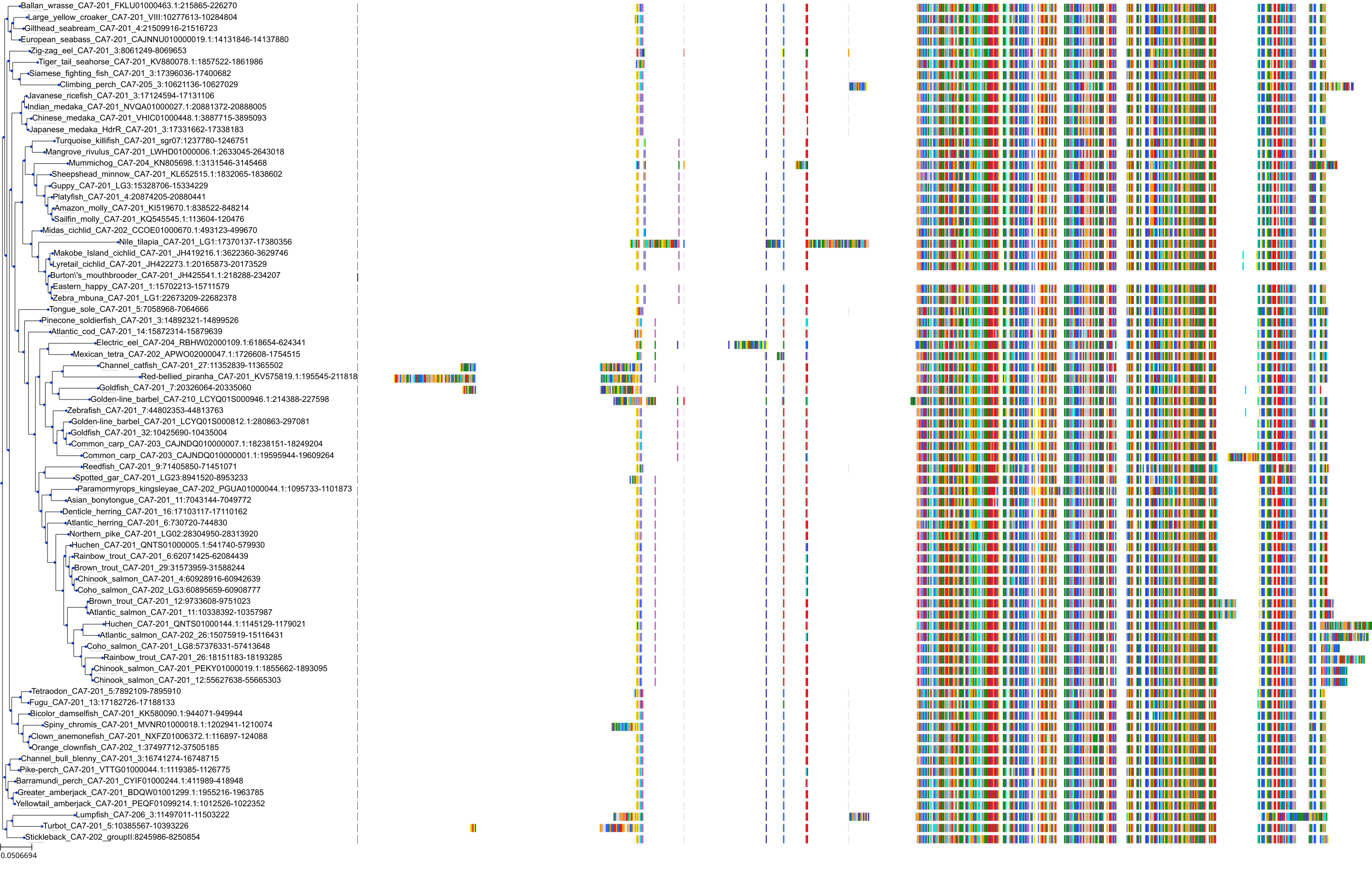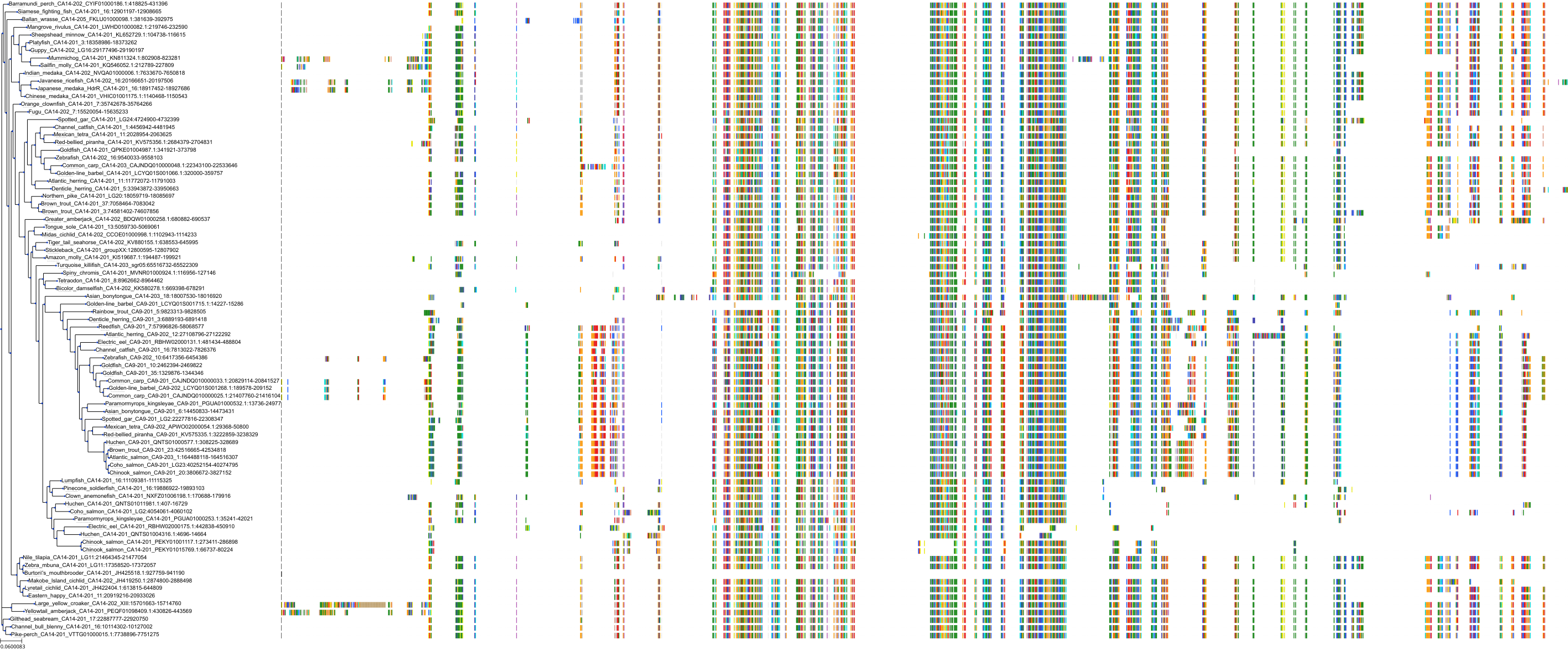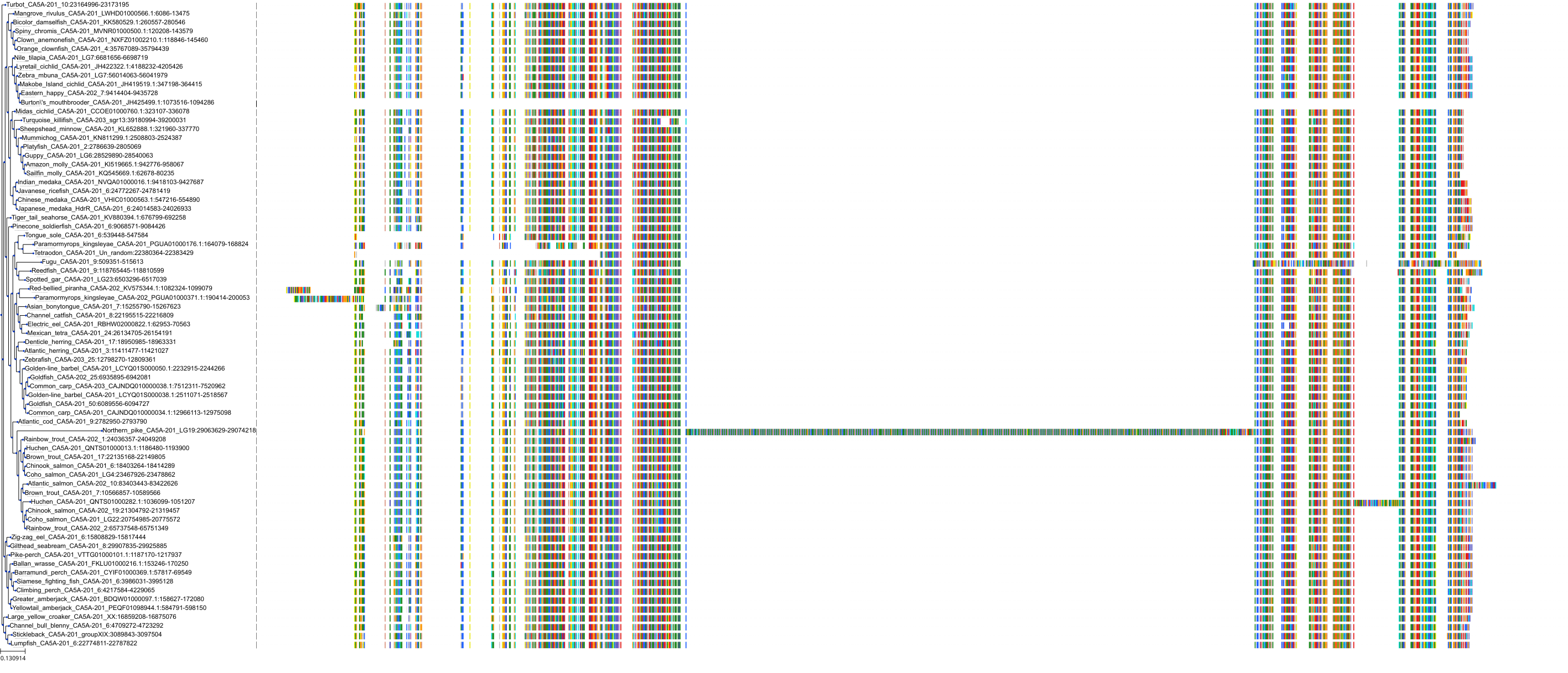|
Inhibition of human recombinant carbonic anhydrase 1 by stopped flow CO2 hydration assay
|
Homo sapiens
|
374.0
nM
|
|
|
Inhibition of human recombinant carbonic anhydrase 2 by stopped flow CO2 hydration assay
|
Homo sapiens
|
9.0
nM
|
|
|
Inhibition of human recombinant CA1 by stopped-flow CO2 hydrase assay
|
Homo sapiens
|
374.0
nM
|
|
|
Inhibition of human recombinant CA2 by stopped-flow CO2 hydrase assay
|
Homo sapiens
|
9.0
nM
|
|
|
Inhibition of human recombinant carbonic anhydrase 1 by stopped flow CO2 hydrase assay
|
Homo sapiens
|
374.0
nM
|
|
|
Inhibition of human recombinant carbonic anhydrase 2 by stopped flow CO2 hydrase assay
|
Homo sapiens
|
9.0
nM
|
|
|
Inhibition of human full length recombinant carbonic anhydrase 6 by stopped flow CO2 hydrase assay
|
Homo sapiens
|
134.0
nM
|
|
|
Inhibition of human recombinant carbonic anhydrase 9 catalytic domain by stopped flow CO2 hydrase assay
|
Homo sapiens
|
43.0
nM
|
|
|
Inhibition of mouse recombinant carbonic anhydrase 15 by stopped flow CO2 hydrase assay
|
Mus musculus
|
65.0
nM
|
|
|
Inhibition of human recombinant carbonic anhydrase 1 by stopped flow CO2 hydration method
|
Homo sapiens
|
374.0
nM
|
|
|
Inhibition of human recombinant carbonic anhydrase 2 by stopped flow CO2 hydration method
|
Homo sapiens
|
9.0
nM
|
|
|
Inhibition of Cryptococcus neoformans recombinant Can2 by stopped-flow CO2 hydration assay
|
Cryptococcus neoformans
|
890.0
nM
|
|
|
Inhibition of Helicobacter pylori beta-carbonic anhydrase by stopped-flow CO2 hydration assay
|
Helicobacter pylori
|
9.0
nM
|
|
|
Inhibition of human recombinant carbonic anhydrase 1 by stopped-flow CO2 hydrase method
|
Homo sapiens
|
374.0
nM
|
|
|
Inhibition of human recombinant CA1 by stopped-flow CO2 assay
|
Homo sapiens
|
374.0
nM
|
|
|
Inhibition of human recombinant CA2 by stopped-flow CO2 assay
|
Homo sapiens
|
9.0
nM
|
|
|
Inhibition of cloned Stylophora pistillata alpha-CA expressed in human HEK293 cells by stopped-flow CO2 assay
|
Stylophora pistillata
|
45.2
nM
|
|
|
Inhibition of human recombinant CA2 by stopped-flow hydration assay
|
Homo sapiens
|
9.0
nM
|
|
|
Inhibition of full length Mycobacterium tuberculosis H37Rv recombinant carbonic anhydrase 2 encoded by RV3588c by stopped flow CO2 hydration assay
|
Mycobacterium tuberculosis
|
664.0
nM
|
|
|
Inhibition of human recombinant CA1 by stopped-flow CO2 hydration assay
|
Homo sapiens
|
374.0
nM
|
|
|
Inhibition of human recombinant CA2 by stopped-flow CO2 hydration assay
|
Homo sapiens
|
9.0
nM
|
|
|
Inhibition of Stylophora pistillata carbonic anhydrase by stopped-flow CO2 hydration assay
|
Stylophora pistillata
|
45.2
nM
|
|
|
Inhibition of Stylophora pistillata carbonic anhydrase 2 by stopped-flow CO2 hydration assay
|
Stylophora pistillata
|
123.0
nM
|
|
|
Inhibition of human recombinant carbonic anhydrase 1 at pH 7.5 by stopped flow CO2 hydration assay
|
Homo sapiens
|
374.0
nM
|
|
|
Inhibition of human recombinant carbonic anhydrase 2 at pH 7.5 by stopped flow CO2 hydration assay
|
Homo sapiens
|
9.0
nM
|
|
|
Inhibition of GST-tagged astrosclera willeyana Astrosclerin-3 expressed in Escherichia coli after 15 mins preincubation by stopped flow CO2 hydration assay
|
Astrosclera willeyana
|
276.0
nM
|
|
|
Inhibition of human recombinant carbonic anhydrase 1 after 15 mins by stopped flow CO2 hydration assay
|
Homo sapiens
|
374.0
nM
|
|
|
Inhibition of human recombinant carbonic anhydrase 2 after 15 mins by stopped flow CO2 hydration assay
|
Homo sapiens
|
9.0
nM
|
|
|
Inhibition of recombinant Vibrio cholerae carbonic anhydrase expressed in Escherichia coli (DE3) preincubated for 15 mins by stopped-flow CO2 hydrase assay
|
Vibrio cholerae
|
88.4
nM
|
|
|
Inhibition of human recombinant carbonic anhydrase 2 preincubated for 15 mins by stopped-flow CO2 hydrase assay
|
Homo sapiens
|
9.0
nM
|
|
|
Inhibition of human recombinant carbonic anhydrase 1 preincubated for 15 mins by stopped-flow CO2 hydrase assay
|
Homo sapiens
|
374.0
nM
|
|
|
Inhibition of human recombinant carbonic anhydrase 1 by stopped flow CO2 hydration assay
|
Homo sapiens
|
374.0
nM
|
|
|
Inhibition of human recombinant carbonic anhydrase 2 by stopped flow CO2 hydration assay
|
Homo sapiens
|
9.0
nM
|
|
|
Inhibition of Trypanosoma cruzi CL Brener recombinant alpha-carbonic anhydrase expressed in insect Sf9 cell Baculovirus system by stopped flow CO2 hydration assay
|
Trypanosoma cruzi
|
71.9
nM
|
|
|
Inhibition of Sulfurihydrogenibium yellowstonense YO3AOP1 recombinant carbonic anhydrase preincubated for 15 mins by CO2 hydration stopped-flow assay
|
Sulfurihydrogenibium yellowstonense
|
7.8
nM
|
|
|
Inhibition of human recombinant carbonic anhydrase 2 preincubated for 15 mins by CO2 hydration stopped-flow assay
|
Homo sapiens
|
9.0
nM
|
|
|
Inhibition of human recombinant carbonic anhydrase 1 preincubated for 15 mins by CO2 hydration stopped-flow assay
|
Homo sapiens
|
374.0
nM
|
|
|
Inhibition of recombinant Leishmania donovani chagasi beta-carbonic anhydrase expressed in baculovirus infected insect Sf9 cells incubated for 15 mins prior to testing by stopped flow CO2 hydrase assay
|
Leishmania donovani chagasi
|
834.0
nM
|
|
|
Inhibition of Thalassiosira weissflogii delta carbonic anhydrase preincubated for 15 mins by stopped flow CO2 hydration assay
|
Thalassiosira weissflogii
|
169.0
nM
|
|
|
Inhibition of Porphyromonas gingivalis recombinant gamma-carbonic anhydrase preincubated for 15 mins by stopped flow CO2 hydration assay
|
Porphyromonas gingivalis
|
424.0
nM
|
|
|
Inhibition of Leishmania donovani chagasi recombinant beta-carbonic anhydrase preincubated for 15 mins by stopped flow CO2 hydration assay
|
Leishmania chagasi
|
834.0
nM
|
|
|
Inhibition of human recombinant carbonic anhydrase 2 preincubated for 15 mins by stopped flow CO2 hydration assay
|
Homo sapiens
|
9.0
nM
|
|
|
Inhibition of Porphyromonas gingivalis gamma-carbonic anhydrase expressed in Escherichia coli preincubated for 15 mins by stopped flow CO2 hydration assay
|
Porphyromonas gingivalis
|
424.0
nM
|
|
|
Inhibition of human carbonic anhydrase-1 by stopped-flow CO2 hydration assay
|
Homo sapiens
|
374.0
nM
|
|
|
Inhibition of human carbonic anhydrase-2 by stopped-flow CO2 hydration assay
|
Homo sapiens
|
9.0
nM
|
|
|
Inhibition of Legionella pneumophilia subsp. Pneumophila strain Philadelphia-1 carbonic anhydrase-1 assessed as CO2 hydrase activity by stopped-flow assay
|
Legionella pneumophila subsp. pneumophila str. Philadelphia 1
|
485.0
nM
|
|
|
Inhibition of Legionella pneumophilia subsp. Pneumophila strain Philadelphia-1 carbonic anhydrase-2 assessed as CO2 hydrase activity by stopped-flow assay
|
Legionella pneumophila subsp. pneumophila str. Philadelphia 1
|
463.0
nM
|
|
|
Inhibition of human recombinant Carbonic anhydrase 1 compound preincubated for 15 mins by stopped flow CO2 hydrase assay method
|
Homo sapiens
|
374.0
nM
|
|
|
Inhibition of human recombinant Carbonic anhydrase 2 compound preincubated for 15 mins by stopped flow CO2 hydrase assay method
|
Homo sapiens
|
9.0
nM
|
|
|
Inhibition of Porphyromonas gingivalis Gamma-carbonic anhydrase compound preincubated for 15 mins by stopped flow CO2 hydrase assay method
|
Porphyromonas gingivalis
|
424.0
nM
|
|
|
Inhibition of human recombinant carbonic anhydrase 1 by stopped-flow CO2 hydration assay
|
Homo sapiens
|
374.0
nM
|
|
|
Inhibition of human recombinant carbonic anhydrase 2 by stopped-flow CO2 hydration assay
|
Homo sapiens
|
9.0
nM
|
|
|
Inhibition of Plasmodium falciparum Eta-carbonic anhydrase pre-incubated for 15 mins before CO2 substrate addition by stopped-flow CO2 hydration assay
|
Plasmodium falciparum
|
132.0
nM
|
|
|
Inhibition of human recombinant carbonic anhydrase 1 by stopped flow CO2 hydrase assay
|
Homo sapiens
|
374.0
nM
|
|
|
Inhibition of human recombinant carbonic anhydrase 2 by stopped flow CO2 hydrase assay
|
Homo sapiens
|
9.0
nM
|
|
|
Inhibition of recombinant Porphyromonas gingivalis gamma-carbonic anhydrase by stopped flow CO2 hydrase assay
|
Porphyromonas gingivalis
|
424.0
nM
|
|
|
Inhibition of recombinant Nostoc commune gamma-carbonic anhydrase preincubated for 15 mins by stopped flow CO2 hydrase assay
|
Nostoc commune
|
82.4
nM
|
|
|
Inhibition of human carbonic anhydrase 1 pre-incubated for 15 mins by stopped-flow CO2 hydration assay
|
Homo sapiens
|
374.0
nM
|
|
|
Inhibition of human carbonic anhydrase 2 pre-incubated for 15 mins by stopped-flow CO2 hydration assay
|
Homo sapiens
|
9.0
nM
|
|
|
Inhibition of Anopheles gambiae carbonic anhydrase pre-incubated for 15 mins by stopped-flow CO2 hydration assay
|
Anopheles gambiae
|
265.0
nM
|
|
|
Inhibition of Nostoc commune gamma carbonic anhydrase by CO2 hydration assay
|
Nostoc commune
|
82.4
nM
|
|
|
Inhibition of Pseudoalteromonas haloplanktis gamma carbonic anhydrase by CO2 hydration assay
|
Pseudoalteromonas haloplanktis
|
898.0
nM
|
|
|
Inhibition of human recombinant carbonic anhydrase-2 by stopped flow CO2 hydrase assay method
|
Homo sapiens
|
9.0
nM
|
|
|
Inhibition of human CA1 incubated for 15 mins prior to testing by stopped flow CO2 hydrase assay
|
Homo sapiens
|
374.0
nM
|
|
|
Inhibition of human CA2 incubated for 15 mins prior to testing by stopped flow CO2 hydrase assay
|
Homo sapiens
|
9.0
nM
|
|
|
Inhibition of Chionodraco hamatus alphaCA incubated for 15 mins prior to testing by stopped flow CO2 hydrase assay
|
Chionodraco hamatus
|
49.5
nM
|
|
|
Inhibition of recombinant human carbonic anhydrase-1 by stopped flow CO2 hydrase assay
|
Homo sapiens
|
374.0
nM
|
|
|
Inhibition of recombinant human carbonic anhydrase-2 by stopped flow CO2 hydrase assay
|
Homo sapiens
|
9.0
nM
|
|
|
Inhibition of recombinant Sulfurihydrogenibium yellowstonense YO3AOP1 carbonic anhydrase by stopped flow CO2 hydrase assay
|
Sulfurihydrogenibium yellowstonense
|
7.8
nM
|
|
|
Inhibition of recombinant Thiomicrospira crunogena XCL-2 carbonic anhydrase by stopped flow CO2 hydrase assay
|
Thiomicrospira crunogena XCL-2
|
432.0
nM
|
|
|
Inhibition of Vibrio cholerae beta-carbonic anhydrase using CO2 as substrate preincubated for 15 mins by stopped-flow CO2 hydration assay
|
Vibrio cholerae
|
455.0
nM
|
|
|
Inhibition of Vibrio cholerae alpha-carbonic anhydrase using CO2 as substrate preincubated for 15 mins by stopped-flow CO2 hydration assay
|
Vibrio cholerae
|
88.4
nM
|
|
|
Inhibition of human Carbonic anhydrase2 using CO2 as substrate preincubated for 15 mins by stopped-flow CO2 hydration assay
|
Homo sapiens
|
9.0
nM
|
|
|
Inhibition of human Carbonic anhydrase1 using CO2 as substrate preincubated for 15 mins by stopped-flow CO2 hydration assay
|
Homo sapiens
|
374.0
nM
|
|
|
Inhibition of human carbonic anhydrase 2 preincubated for 15 mins by CO2 hydrase stopped flow assay
|
Homo sapiens
|
9.0
nM
|
|
|
Inhibition of Porphyromonas gingivalis gamma carbonic anhydrase preincubated for 15 mins by stopped flow CO2 hydration assay
|
Porphyromonas gingivalis
|
424.0
nM
|
|
|
Inhibition of Nostoc commune gamma carbonic anhydrase preincubated for 15 mins by stopped flow CO2 hydration assay
|
Nostoc commune
|
82.4
nM
|
|
|
Inhibition of Pseudoalteromonas haloplanktis gamma carbonic anhydrase preincubated for 15 mins by stopped flow CO2 hydration assay
|
Pseudoalteromonas haloplanktis
|
898.0
nM
|
|
|
Inhibition of recombinant Colwellia psychrerythraea gamma carbonic anhydrase preincubated for 15 mins by stopped flow CO2 hydration assay
|
Colwellia psychrerythraea
|
380.0
nM
|
|
|
Inhibition of human carbonic anhydrase 1 incubated for 15 mins by stopped-flow CO2 hydration assay
|
Homo sapiens
|
374.0
nM
|
|
|
Inhibition of human carbonic anhydrase 2 incubated for 15 mins by stopped-flow CO2 hydration assay
|
Homo sapiens
|
9.0
nM
|
|
|
Inhibition of Vibrio cholerae beta carbonic anhydrase incubated for 15 mins by stopped-flow CO2 hydration assay
|
Vibrio cholerae
|
455.0
nM
|
|
|
Inhibition of recombinant Enterobacter sp. B13 beta carbonic anhydrase incubated for 15 mins by stopped-flow CO2 hydration assay
|
Enterobacter sp.
|
138.0
nM
|
|
|
Inhibition of recombinant Vibrio cholerae gamma-carbonic anhydrase preincubated for 15 mins by stopped-flow CO2 hydration assay
|
Vibrio cholerae
|
464.0
nM
|
|
|
Inhibition of recombinant human carbonic anhydrase 1 assessed as reduction in CO2 hydration preincubated for 15 mins followed by CO2 addition measured for 10 to 100 sec by Line-Weaver Burk plot analysis
|
Homo sapiens
|
374.0
nM
|
|
|
Inhibition of human carbonic anhydrase 2 assessed as reduction in CO2 hydration preincubated for 15 mins followed by CO2 addition measured for 10 to 100 sec by Line-Weaver Burk plot analysis
|
Homo sapiens
|
9.0
nM
|
|
|
Inhibition of Vibrio cholerae Gamma-carbonic anhydrase assessed as reduction in CO2 hydration preincubated for 15 mins followed by CO2 addition measured for 10 to 100 sec by Line-Weaver Burk plot analysis
|
Vibrio cholerae
|
464.0
nM
|
|
|
Inhibition of human carbonic anhydrase-1 assessed as reduction in CO2 hydration preincubated for 15 mins followed by CO2 addition measured for 10 to 100 secs by stopped-flow assay
|
Homo sapiens
|
374.0
nM
|
|
|
Inhibition of human carbonic anhydrase-2 assessed as reduction in CO2 hydration preincubated for 15 mins followed by CO2 addition measured for 10 to 100 secs by stopped-flow assay
|
Homo sapiens
|
9.0
nM
|
|
|
Inhibition of full length human cytosolic carbonic anhydrase 1 preincubated for 15 mins by stop flow CO2 hydrase assay
|
Homo sapiens
|
374.0
nM
|
|
|
Inhibition of human cytosolic carbonic anhydrase 2 preincubated for 15 mins by stop flow CO2 hydrase assay
|
Homo sapiens
|
9.0
nM
|
|
|
SARS-CoV-2 3CL-Pro protease inhibition percentage at 20µM by FRET kind of response from peptide substrate
|
Severe acute respiratory syndrome coronavirus 2
|
21.61
%
|
|
|
Antiviral activity determined as inhibition of SARS-CoV-2 induced cytotoxicity of VERO-6 cells at 10 uM after 48 hours exposure to 0.01 MOI SARS CoV-2 virus by high content imaging
|
Chlorocebus sabaeus
|
-0.31
%
|
|
Antiviral activity determined as inhibition of SARS-CoV-2 induced cytotoxicity of VERO-6 cells at 10 uM after 48 hours exposure to 0.01 MOI SARS CoV-2 virus by high content imaging
|
Chlorocebus sabaeus
|
-0.31
%
|
|
|
Inhibition of Vibrio cholerae beta carbonic anhydrase pre-incubated for 15 mins prior to testing by phenol red-based stopped-flow CO2 hydration assay
|
Vibrio cholerae
|
68.0
nM
|
|
|
Inhibition of recombinant human carbonic anhydrase 2 preincubated with enzyme for 15 mins by phenol red dye based stopped flow CO2 hydration assay
|
Homo sapiens
|
7.0
nM
|
|
|
Inhibition of Vibrio cholerae alpha carbonic anhydrase preincubated with enzyme for 15 mins by phenol red-based stopped-flow CO2 hydration assay
|
Vibrio cholerae
|
88.4
nM
|
|
|
Inhibition of Vibrio cholerae beta carbonic anhydrase preincubated with enzyme for 15 mins by phenol red-based stopped-flow CO2 hydration assay
|
Vibrio cholerae
|
455.0
nM
|
|
|
Inhibition of recombinant human carbonic anhydrase 1 preincubated with enzyme for 15 mins by phenol red dye based stopped flow CO2 hydration assay
|
Homo sapiens
|
374.0
nM
|
|



